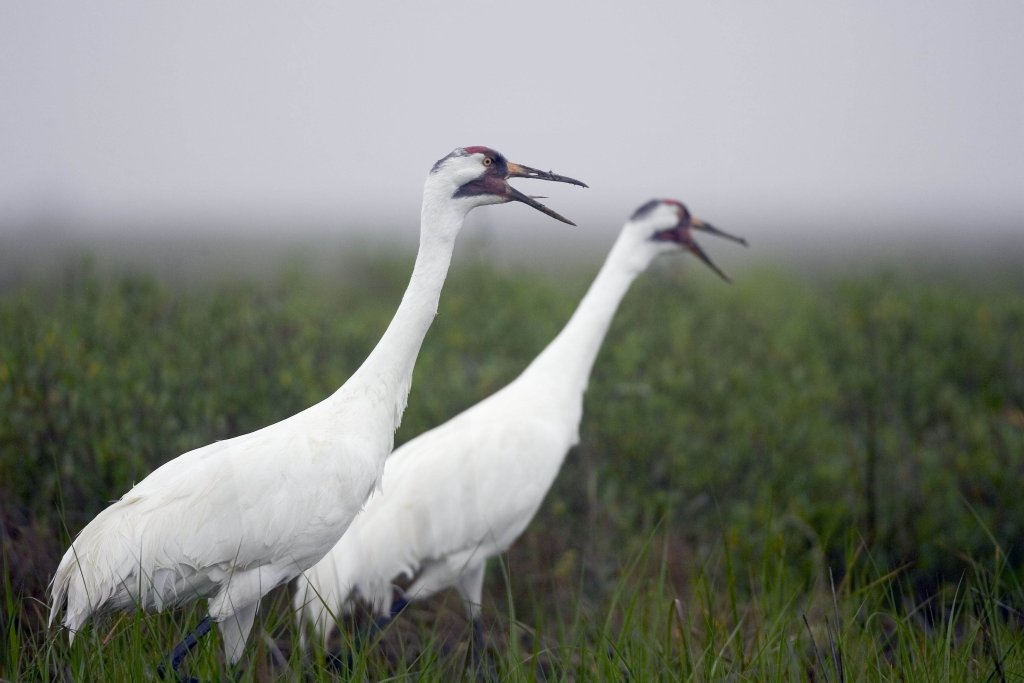It appears the U.S. Fish and Wildlife Service is now unable to confirm the loss of endangered whooping cranes that became the basis of a 2010 lawsuit by an environmental group against the state of Texas.
The nonprofit Aransas Project argued that the Texas Commission on Environmental Quality (TCEQ) violated the federal Endangered Species Act because it didn’t allow enough freshwater from the San Antonio and Guadalupe rivers to flow into the Aransas Refuge, resulting in the deaths of 23 endangered whooping cranes.
The United States Court of Appeals for the Fifth Circuit agreed in 2014 with defendants that the Aransas Project failed to prove its case that diversions of water for use by Texans had led to multiple deaths of federally protected whooping cranes in the winter of 2008.
The Fifth Circuit in December 2014 denied a Petition for Rehearing En Banc requested by attorneys for The Aransas Project v. Shaw, in which a three-judge panel of the Fifth Circuit reversed a judgment of the U.S. District Court for the Southern District of Texas. The U.S. Supreme Court decided not to hear the case.
TCEQ said Wednesday that the U.S. Fish and Wildlife Service responded with the following statement during a recent hearing of the U.S. House Committee on Natural Resources: “Following the retirement of the service’s Whooping Crane Coordinator in 2011, a team of specialists was formed to evaluate our process for estimating the whooping crane population. After an extensive review, the team updated the methodology used for estimating whooping crane abundance. Use of this scientifically sound methodology has improved our knowledge and understanding of the whooping crane population and will aid in conservation planning, future policy decisions, and the long-term conservation of this species for the American public. However, the service is unable to confirm the loss of whooping cranes previously reported in 2008-2009, because the data could not be verified using the previous methodology. Therefore, the number of whooping cranes that died at Aransas National Wildlife Refuge during the winter of 2008-2009 remains unknown.”
Throughout the trial and subsequent appeals, the TCEQ presented wildlife experts who disputed the plaintiff’s claim that 23 whooping cranes had died.
“We are pleased to have this independent, scientific confirmation of the position we took throughout the legal proceedings,” Bryan W. Shaw, Ph.D., P.E., chairman of the TCEQ, said. “The TCEQ already has programs in place that take into account wildlife that depends on stream flows. In addition, had this suit stood, it would have seriously disrupted Texas’ existing water rights laws.”
Texas Farm Bureau (TFB) was concerned about the negative precedence of this case and tried to intervene in the lawsuit soon after it was first filed. TFB’s support of the TCEQ position has remained steadfast.
The so-called proof of whooping crane deaths consisted of two carcasses and the failure to see cranes during aerial surveys. In spite of this claim, the Fifth Circuit noted in its ruling the numbers of whooping cranes has continued to increase to the latest estimate of 300 cranes (winter 2011-12).
“This is a great validation for farmers, ranchers and property owners and all the people of Texas who would have suffered from the lower court’s opinion that overreached and relied on dubious science,” said Regan Beck, TFB director of Government Affairs.

